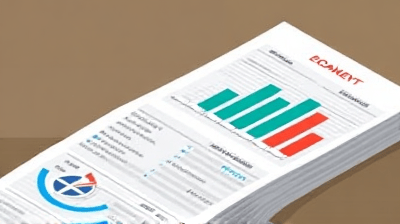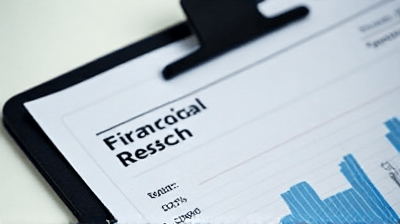Understanding financial statements is a foundational skill for anyone interested in investing. Whether you are managing your own portfolio or analyzing potential investments, the ability to read balance sheets, income statements, and cash flow statements can provide vital insight into a company's financial health.

Introduction to Financial Statements
Financial statements are standardized reports that provide a summary of a company's financial performance and position. They serve several purposes, including:
- Evaluating Performance: They enable investors and stakeholders to assess how well a company is doing financially.
- Comparative Analysis: Investors can compare financial metrics across companies or over time.
- Informed Decision-Making: By understanding these statements, investors can make better decisions regarding buying, holding, or selling securities.
Types of Financial Statements
There are three primary types of financial statements that investors should focus on:
- Balance Sheet
- Income Statement
- Cash Flow Statement
The Importance of Financial Literacy
Financial literacy enables investors to interpret complex information easily. A strong grasp of financial statements can help you identify trends, assess risk, and evaluate management effectiveness.
Let’s delve deeper into each type of financial statement to develop an understanding of how to read them like a pro.
1. Understanding the Balance Sheet
The balance sheet provides a snapshot of a company’s financial position at a specific point in time. It lists the company's assets, liabilities, and shareholders' equity.
Key Components of the Balance Sheet
-
Assets: What the company owns, which can be divided into current and non-current assets.
- Current Assets: Assets expected to be converted to cash within one year (e.g., cash, accounts receivable, inventory).
- Non-Current Assets: Long-term investments (e.g., property, equipment, intangible assets).
-
Liabilities: What the company owes to others, also categorized into current and non-current liabilities.
- Current Liabilities: Obligations due within one year (e.g., accounts payable, short-term loans).
- Non-Current Liabilities: Long-term debts (e.g., mortgages, bonds payable).
-
Shareholders' Equity: The residual interest in the assets after deducting liabilities, representing the owners' claim on the business.
How to Analyze the Balance Sheet
-
Assess Liquidity: Use the current ratio (current assets/current liabilities) to evaluate whether the company can meet its short-term obligations. A current ratio above 1 indicates a good liquidity position.
-
Examine Solvency: The debt-to-equity ratio (total liabilities/total shareholders' equity) assesses how much debt the company is using to finance its assets. A ratio lower than 1 typically signifies less risk.
-
Evaluate Asset Composition: Identify the proportion of current vs. non-current assets. A company with a high level of current assets is usually more liquid.
Practical Example of a Balance Sheet
| Company XYZ | |
|---|---|
| Assets | |
| Current Assets | $ 100,000 |
| Non-Current Assets | $ 200,000 |
| Total Assets | $ 300,000 |
| Liabilities | |
| Current Liabilities | $ 50,000 |
| Non-Current Liabilities | $ 100,000 |
| Total Liabilities | $ 150,000 |
| Shareholders' Equity | $ 150,000 |
| Total Liabilities and Equity | $ 300,000 |
In this example, Company XYZ has a current ratio of 2 ( 50,000), indicating good short-term liquidity, and a debt-to-equity ratio of 1 ( 150,000), suggesting a balanced approach to financing.
2. Analyzing the Income Statement
The income statement, also known as the profit and loss statement, summarizes a company’s revenues and expenses over a period of time. This statement is crucial for assessing profitability.
Key Components of the Income Statement
- Revenue: The total income generated from sales of goods or services.
- Cost of Goods Sold (COGS): Direct costs attributable to producing the goods sold, including materials and labor.
- Gross Profit: Revenue minus COGS, indicating the profitability from core business activities.
- Operating Expenses: Costs required to run the business excluding COGS (e.g., salaries, utilities, rent).
- Net Income: The bottom line, calculated as revenue minus all expenses, taxes, and interest.
How to Analyze the Income Statement
-
Gross Margin: Calculate gross margin (gross profit/revenue) to assess how efficiently a company is producing its goods.
-
Operating Margin: Evaluate the operating margin (operating income/revenue) to measure the efficiency of operations excluding financing and tax expenses.
-
Net Profit Margin: Determine the net profit margin (net income/revenue) to gain insight into overall profitability after all expenses.
Practical Example of an Income Statement
| Company XYZ | |
|---|---|
| Revenue | $ 500,000 |
| Cost of Goods Sold | $ 300,000 |
| Gross Profit | $ 200,000 |
| Operating Expenses | $ 100,000 |
| Operating Income | $ 100,000 |
| Interest Expense | $ 10,000 |
| Income Before Tax | $ 90,000 |
| Taxes | $ 18,000 |
| Net Income | $ 72,000 |
In this example, Company XYZ has gross, operating, and net profit margins of 40%, 20%, and 14.4%, respectively. These figures indicate solid performance relative to industry averages.

3. Decoding the Cash Flow Statement
The cash flow statement outlines the inflows and outflows of cash within a company over a specific period. It is divided into three main sections:
- Operating Activities: Cash generated or used in core business operations.
- Investing Activities: Cash used for investing in assets or received from the sale of assets.
- Financing Activities: Cash received from issuing debt or equity or used to pay dividends and repay loans.
Key Components of the Cash Flow Statement
- Cash Flows from Operating Activities: Typically includes net income adjusted for non-cash items (e.g., depreciation) and changes in working capital.
- Cash Flows from Investing Activities: Depicts cash spent on acquiring physical assets or cash earned from the sale of such assets.
- Cash Flows from Financing Activities: This section reveals the company's financing strategies, including loans and equity financing.
How to Analyze the Cash Flow Statement
-
Free Cash Flow (FCF): Calculate free cash flow (operating cash flow - capital expenditures) to determine how much cash is available for distribution to shareholders or reinvestment.
-
Cash Flow from Operations: Ensure that cash flows from operating activities are positive and sufficient to cover capital expenditures and dividends.
-
Trends in Cash Flow: Analyze trends in cash flow over multiple periods to identify whether a company is becoming more or less cash-efficient.
Practical Example of a Cash Flow Statement
| Company XYZ | |
|---|---|
| Cash Flows from Operating Activities | |
| Net Income | $ 72,000 |
| Depreciation | $ 10,000 |
| Changes in Working Capital | $ 5,000 |
| Net Cash Provided by Operating Activities | $ 87,000 |
| Cash Flows from Investing Activities | |
| Purchase of Equipment | ( $ 30,000) |
| Sale of Investments | $ 5,000 |
| Net Cash Used in Investing Activities | ( $ 25,000) |
| Cash Flows from Financing Activities | |
| Issuance of Debt | $ 20,000 |
| Dividend Payments | ( $ 10,000) |
| Net Cash Provided by Financing Activities | $ 10,000 |
| Net Change in Cash | $ 72,000 |
In this example, Company XYZ demonstrates strong operating cash flow, making it well-positioned to invest in growth opportunities while managing cash effectively.
4. Integrating Financial Statements for Comprehensive Analysis
To gain a holistic view of a company's performance, it is essential to analyze the financial statements in conjunction with one another.
The Interrelationship Between Statements
-
Balance Sheet and Income Statement: The net income from the income statement flows into the retained earnings section of the balance sheet, affecting shareholders' equity.
-
Cash Flow Statement and Income Statement: A high net income or profit does not necessarily indicate good cash flow. It is crucial to look at cash flow from operating activities to assess the quality of earnings.
-
Cash Flow Statement and Balance Sheet: Changes in cash on the balance sheet can be reconciled with cash flow from operating, investing, and financing activities in the cash flow statement.
5. Practical Tips for Financial Statement Interpretation
Understanding financial statements is not just about knowing how to read them; it's about contextualizing the information.
Key Tips
-
Know the Industry: Different industries have varying benchmarks for financial metrics. Familiarize yourself with the norms in the industry you are analyzing.
-
Look at Trends Over Time: Compare financial statements over multiple reporting periods to identify trends and gauge whether a company is improving or declining.
-
Evaluate Management Discussion and Analysis (MD&A): Use the MD&A section of annual reports, which provides insights into management's outlook and strategies.
-
Conduct Peer Comparisons: Compare a company’s financial ratios and metrics to those of its direct competitors to evaluate relative performance.
-
Stay Updated: Regularly follow financial news related to the company and its sector to understand external factors impacting performance.
Conclusion
Reading and analyzing financial statements like a pro is essential for making informed investment decisions. By mastering the balance sheet, income statement, and cash flow statement, you can evaluate a company's performance, financial health, and potential for growth.
Understanding how to dissect financial data, assess risk, and identify opportunities will give you a significant edge in your investment journey. Financial literacy is not merely a skill but a powerful tool that can lead to better financial outcomes.
With practice, patience, and a keen eye for detail, you can transform yourself into a proficient analyst and investor.



